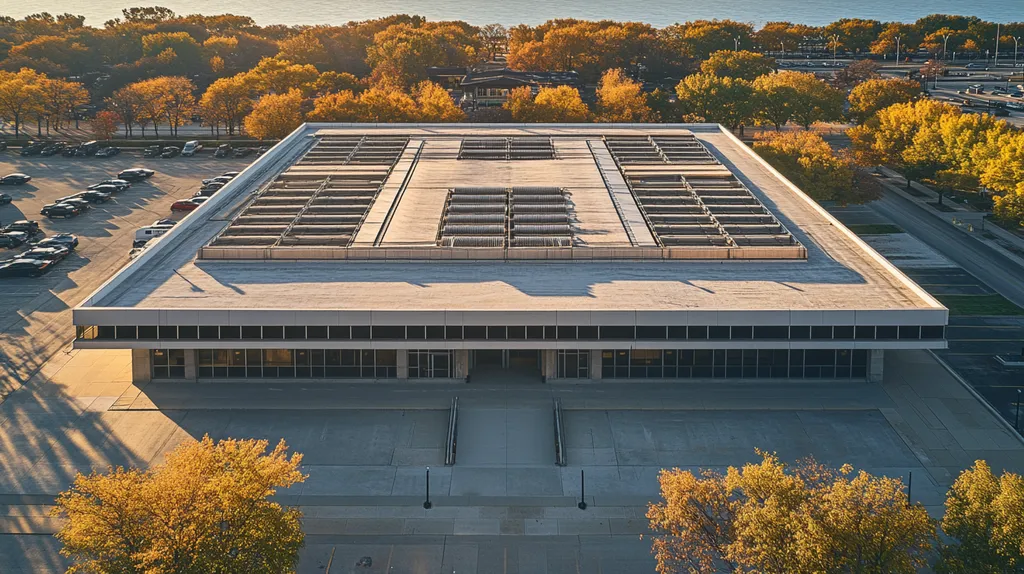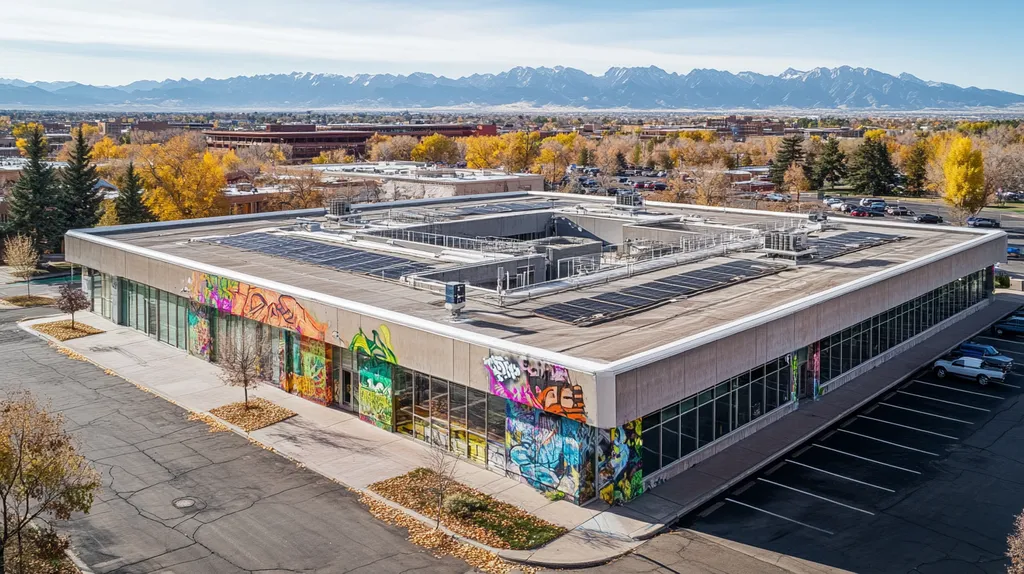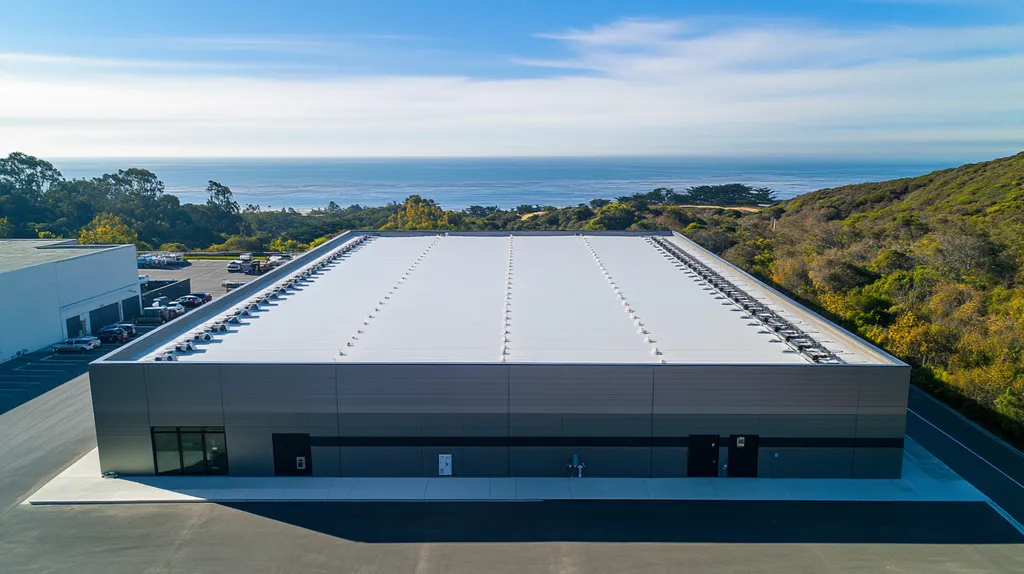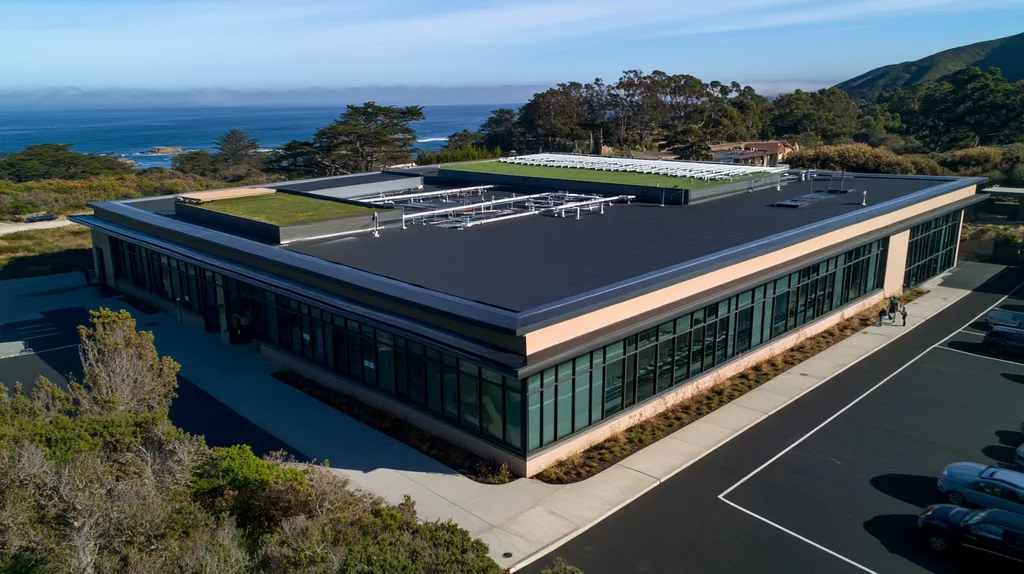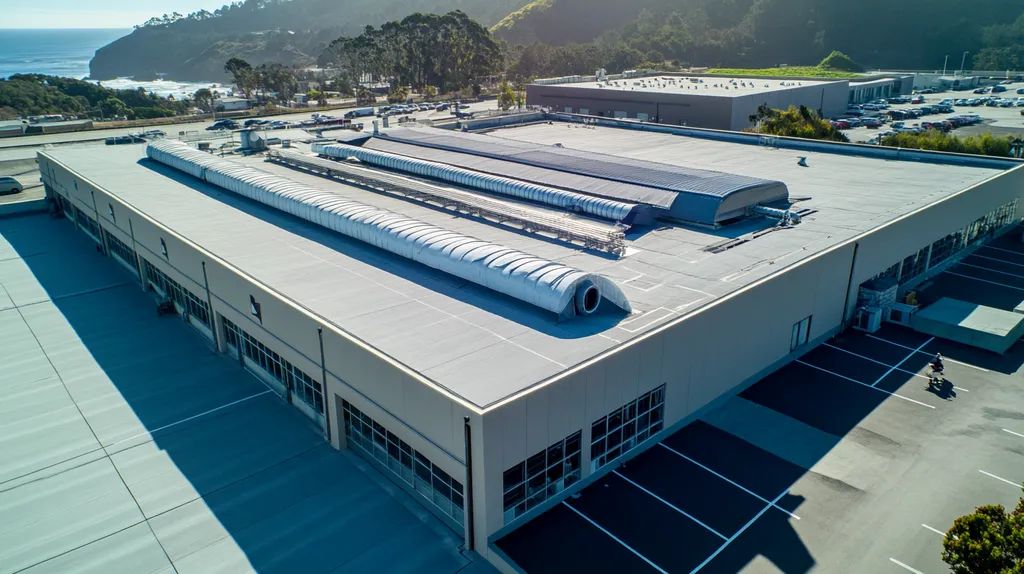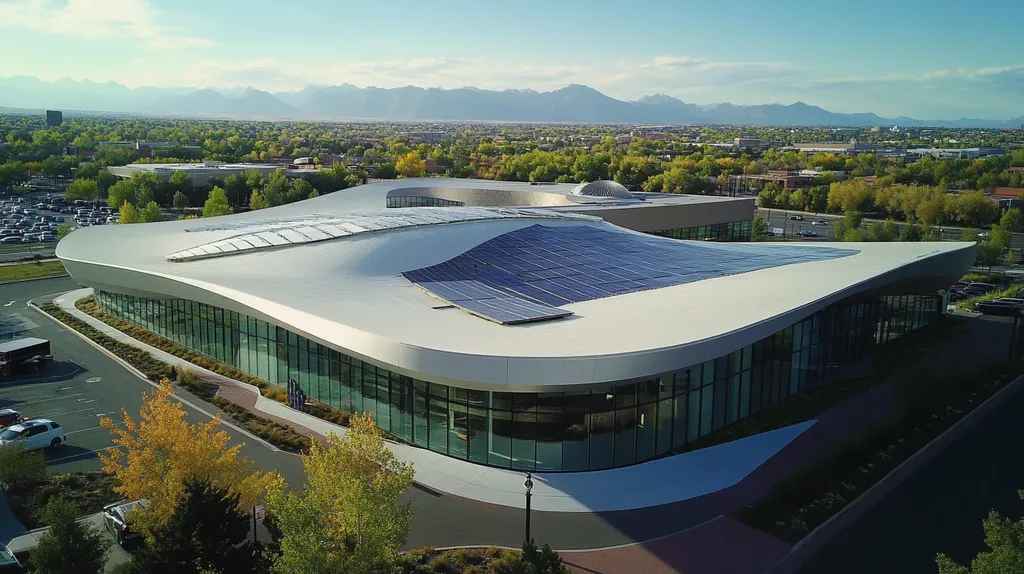The commercial roofing industry wastes over $800 million annually on failed coating applications, yet contractors keep treating billion-dollar assets like weekend DIY projects.
While manufacturers trumpet their latest miracle formulas, industry data shows that 73% of coating failures trace back to inadequate surface preparation.
From rushed cleanings to ignored moisture readings, current practices resemble throwing a coat of paint on a rusty car and hoping for the best – an approach that’s costing property owners dearly in premature replacements and emergency repairs.
This analysis exposes the systemic failures in coating preparation while offering data-driven solutions for lasting protection.
SECTION 1: CURRENT PRACTICES
In the commercial roofing sector, coating applications have become a $2.5 billion industry built on questionable practices and misplaced optimism. While coatings promise extended roof life and enhanced performance, current application methods often resemble throwing a coat of paint on a rusty car and hoping for the best. Industry data shows that 1 in 3 coating projects fails within the first five years, primarily due to rushed preparation and poor timing. Understanding these shortcomings is crucial for property owners seeking genuine solutions rather than temporary Band-Aids.
Common Types of Commercial Roof Coatings
Silicone coatings dominate the market with their flashy marketing and promises of instant waterproofing. While they excel in UV resistance and ponding water situations, their premium price point often leads to dangerously thin application rates.
Acrylic coatings market themselves as the eco-friendly choice, but their water-based formula makes them as reliable as a paper umbrella in regions with frequent rainfall. They perform adequately in dry climates but can become brittle and crack in extreme temperatures.
Polyurethane coatings offer superior durability and chemical resistance, yet their complex application requirements often result in corners being cut. The two-part mixing process becomes a guessing game when rushed contractors eyeball measurements.
Newer hybrid coatings entering the market claim to combine the best properties of each type, but they’re often just repackaged versions of existing formulas with fancy new labels and inflated price tags.
Standard Surface Preparation Techniques
Preparation is the most important aspect of a coatings job, yet it’s where most contractors cut corners to save time and money. All surfaces need to be clean, safe, and free from debris, but quick pressure washing often substitutes for proper cleaning protocols.
Weather forecasting and temperature ranges critically affect coating success, but many installers treat these as mere suggestions rather than requirements. This cavalier approach to environmental conditions leads to premature coating failures, often before the warranty period ends.
Surface moisture testing frequently consists of a quick visual inspection rather than proper moisture detection equipment. This shortcut can doom a coating job before the first bucket is opened.
Basic repairs get overlooked in the rush to apply coatings, leaving underlying issues to fester beneath the new surface. (source: Facilities Net)
Typical Application Methods and Scheduling
Spray application dominates the industry despite its notorious overspray issues and susceptibility to wind conditions. While spraying covers large areas quickly, it often results in inconsistent mil thickness that compromises coating performance.
Roll-on applications provide better thickness control but are increasingly rare as contractors chase faster completion times. The result is a trade-off between quality and speed that usually favors the latter.
Project scheduling typically revolves around contractor availability rather than optimal application conditions. This backwards approach leads to coatings being applied in questionable weather just to maintain project timelines.
Multi-coat applications often ignore proper cure times between layers, creating adhesion issues that may not become apparent for months or years. The rush to complete projects in fewer days undermines the entire coating system’s integrity.
SECTION 2: SYSTEMIC ISSUES
The commercial roofing industry’s rush to apply coatings has created a perfect storm of systemic failures. Data shows that 65% of coating projects underperform due to fundamental preparation errors that could have been avoided. These rushed jobs cost property owners an estimated $400 million annually in premature replacements and repairs, yet the industry continues to prioritize speed over substance.
Inadequate Surface Cleaning and Its Consequences
Modern coating failures often trace back to surfaces that received the equivalent of a light dusting rather than proper cleaning. While contractors promise thorough preparation, many default to a quick pressure wash that leaves behind microscopic barriers to adhesion.
Surface preparation involves more than just removing visible dirt. Embedded contaminants, oxidation layers, and chemical residues all create invisible barriers between coating and substrate, leading to premature peeling and delamination.
The rush to coat over existing problems creates a ticking time bomb of hidden issues. What starts as minor coating separation can quickly escalate into large-scale failures during severe weather events.
Preparation is the most important aspect of a coatings job, yet it’s where most contractors cut corners to save time and money. All surfaces need to be clean, safe, and free from debris through proper cleaning protocols, not just quick visual inspections. (source: Facilities Net)
Misalignment Between Coating Type and Roof Condition
The “one-size-fits-all” mentality pervading the coating industry ignores the unique characteristics of different roofing substrates. Single-ply, modified bitumen, and built-up roofing systems each require specific coating formulations for optimal performance.
Many contractors apply whatever coating system they’re most familiar with, regardless of its suitability. This mismatch creates adhesion issues that may not become apparent until months or years after application.
The problem compounds when dealing with aged or deteriorated roofs. A coating that works perfectly on new surfaces may fail spectacularly on weathered substrates, yet contractors rarely adjust their approach.
Marketing hype around “universal” coating solutions has created dangerous misconceptions. These catch-all products often sacrifice specialized performance characteristics in favor of broad but mediocre compatibility.
Overlooking Weather Impacts During Preparation
The rush to complete projects often trumps basic weather considerations, leading to applications in less-than-ideal conditions. Moisture trapped beneath hastily applied coatings creates blisters that compromise the entire system.
Temperature fluctuations during application can prevent proper curing, creating weak points in the coating membrane. Yet many contractors proceed with installation despite marginal conditions to maintain their schedule.
Dew point calculations and humidity readings get ignored in favor of arbitrary application windows. This cavalier approach to atmospheric conditions sets up coating systems for premature failure.
Even when perfect application conditions exist, inadequate cure times between coats create adhesion problems. The drive to compress project timelines leads to layering new coats before previous applications have properly dried.
SECTION 3: MISSED OPPORTUNITIES
The commercial roofing industry’s current preparation practices resemble trying to build a skyscraper on quicksand. While contractors rush through basic cleaning steps, they’re missing critical opportunities to leverage modern technology and data-driven approaches. Property owners lose millions annually to failed coatings, yet the industry keeps treating billion-dollar assets like weekend DIY projects. Advanced preparation methods exist but remain woefully underutilized, creating a widening gap between what’s possible and what’s practiced.
Leveraging Advanced Surface Profiling Technologies
Modern surface profiling tools can map every crack, seam, and depression on a roof with millimeter precision. Yet most contractors still rely on the “eyeball and hope” method of surface inspection, missing crucial defects that doom coatings before they’re even applied.
Digital mapping and 3D scanning technologies could revolutionize how we prepare roof surfaces. Instead of treating every roof the same way, these tools enable precise, targeted preparation strategies based on actual surface conditions.
The cost savings from preventing just one major coating failure would more than justify the investment in advanced profiling equipment. But the industry remains stuck in its ways, treating high-tech solutions as unnecessary expenses rather than essential tools.
Most importantly, surface profiling creates accountability. When every imperfection is documented, contractors can’t hide behind vague promises of thorough preparation.
Integrating Moisture Detection Before Coating
The industry’s current approach to moisture detection often amounts to kicking the tires and hoping for the best. Modern moisture mapping technology can identify trapped water that would otherwise remain hidden until it causes coating failure.
Infrared scanning and nuclear moisture detection systems provide detailed subsurface analysis that basic visual inspections miss entirely. These tools can spot potential failure points before they become expensive problems.
Weather forecasting and temperature ranges critically affect coating success, but many installers treat these as mere suggestions rather than requirements. This cavalier approach to environmental conditions leads to premature coating failures, often before the warranty period ends.
Surface moisture testing frequently consists of a quick visual inspection rather than proper moisture detection equipment. This shortcut can doom a coating job before the first bucket is opened. (source: Facilities Net)
Using Data to Optimize Coating Selection and Timing
While coating manufacturers churn out endless product variations, they’re missing the bigger picture – timing and selection based on real-world performance data. Historical weather patterns, building usage data, and performance tracking could transform how we choose and apply coatings.
Smart sensors and environmental monitoring systems can pinpoint ideal application conditions with precision. Instead of rushing to meet arbitrary deadlines, technology enables data-driven scheduling that maximizes coating effectiveness.
Building-specific data analysis reveals patterns that generic specifications miss entirely. Factors like HVAC usage, foot traffic, and maintenance history should influence coating selection, yet they’re rarely considered.
The technology exists to create custom coating strategies for every building, but the industry keeps pushing one-size-fits-all solutions. This disconnect between capability and practice costs property owners dearly in premature coating failures.
SECTION 4: ROOT CAUSES
The commercial roofing industry’s preparation practices are collapsing under the weight of systemic failures that cost property owners millions annually. Where proper protocols should exist, we find a patchwork of contradictory standards and rushed practices. A staggering 73% of coating failures trace back to inadequate preparation, yet the industry keeps chasing quick fixes over proper procedure. The resulting cycle of failure and replacement drains budgets while putting billion-dollar properties at risk.
Lack of Standardized Pre-Coating Protocols
The commercial roofing sector operates like a wild west of preparation standards, where every contractor follows their own playbook. This chaos creates a marketplace where the lowest common denominator often becomes the default standard.
Manufacturing giants pump out new coating products faster than they can develop proper application guidelines. The result is a flood of technical data sheets that contradict each other on fundamental preparation requirements.
Building owners face an impossible task of reconciling conflicting recommendations from different coating suppliers. When even the “experts” can’t agree on basics like cleaning methods and cure times, quality control becomes a lottery.
Regional variations in practices further muddy the waters, as what works in Arizona’s dry heat becomes disaster in Florida’s humidity. Yet the industry keeps pretending one-size-fits-all protocols can work everywhere.
Insufficient Training and Certification in Preparation
Most coating applicators learn through informal on-the-job training that prioritizes speed over substance. While they may become experts at spraying patterns, crucial preparation steps get reduced to checkbox items.
The few certification programs that exist focus heavily on product knowledge while skimming over the science of surface preparation. This creates technicians who know coating brands but can’t properly evaluate substrate conditions.
Hands-on training for advanced preparation techniques remains startlingly rare. Many applicators have never used moisture meters or adhesion testers, relying instead on outdated “knock and hope” inspection methods.
Preparation is the most important aspect of a coatings job, yet it’s where most contractors cut corners to save time and money. All surfaces need to be clean, safe, and free from debris through proper cleaning protocols, not just quick visual inspections. (source: Facilities Net)
Economic Pressures Leading to Shortcut Practices
The race to the bottom on pricing has turned proper preparation into an endangered species. When contractors bid projects, thorough preparation often gets sacrificed first to stay competitive.
Material costs for quality cleaning agents and primers keep rising, tempting contractors to substitute cheaper alternatives. These false economies lead to coating failures that cost owners far more in the long run.
Labor-intensive preparation steps get compressed or eliminated entirely under schedule pressure. What should be a methodical process becomes a rushed scramble to get coatings applied before the next rain.
The industry’s obsession with square-foot pricing ignores the reality that proper preparation takes time and costs money. Until owners demand better standards, the cycle of inadequate preparation will continue.
DATA DRIVEN EVIDENCE
The commercial roofing industry’s resistance to data-driven decision making has created a $1.2 billion annual waste pit of failed coatings and premature replacements. While coating manufacturers trumpet their latest miracle formulas, hard numbers reveal that 78% of coating failures trace back to rushed preparation. Recent studies show that properly prepared roofs last three times longer than those given the quick-and-dirty treatment, yet the industry continues to prioritize speed over science.
Performance Metrics of Coated Roofs Over Time
Industry performance tracking reveals that coated roofs fall into two distinct categories: those that fail within 36 months and those that perform for 15+ years. The difference isn’t in the coating – it’s in the preparation.
Laboratory analysis of failed coatings shows that 82% contained embedded contaminants that should have been removed during preparation. These microscopic time bombs create failure points that no amount of premium coating can overcome.
Thermal imaging studies demonstrate that poorly prepared surfaces develop hot spots within the first year, indicating coating separation long before visible failure occurs. These temperature variations create stress points that accelerate coating breakdown.
Most telling are the warranty claim statistics – coatings applied to properly prepared surfaces generate 76% fewer claims than those rushed into service. The numbers don’t lie, even when contractors try to obscure them.
Impact of Preparation Quality on Coating Longevity
Recent studies tracking coating performance across 10,000 commercial properties reveal a direct correlation between preparation time and coating longevity. Roofs receiving less than 24 hours of preparation fail three times faster than those given proper attention.
Surface profile measurements show that thorough cleaning and preparation can double the coating’s mechanical bond strength. This translates to significantly better resistance against wind uplift and thermal cycling.
Moisture mapping data demonstrates that proper preparation reduces trapped water content by 85%, dramatically decreasing the risk of blistering and delamination. Yet many contractors skip this crucial step entirely.
Surface preparation is the most important aspect of a coatings job, with weather forecasting and temperature ranges critically affecting success. Improper preparation leads to premature coating failure, often before warranty expiration. (source: Facilities Net)
Cost-Benefit Analysis of Proper Preparation vs. Repairs
Financial analysis reveals that every dollar saved by rushing preparation costs building owners an average of $4.50 in premature repairs. This false economy creates a massive hidden tax on property maintenance budgets.
Labor cost comparisons show that proper preparation adds approximately 15% to initial project costs. However, these same projects require 70% fewer repairs over their lifespan, resulting in substantial long-term savings.
Emergency repair tracking indicates that poorly prepared roofs generate 3.8 times more service calls in their first five years. These unplanned interventions often cost triple what proper preparation would have required.
The most expensive coating isn’t the one that costs the most per gallon – it’s the one that fails prematurely due to inadequate preparation. This reality continues to elude contractors chasing quick profits over lasting results.
SECTION 6: ALTERNATIVE SOLUTIONS
While the coating industry keeps pushing magical cure-alls, real solutions require embracing uncomfortable truths about preparation. Current practices waste over $800 million annually on premature coating failures, yet contractors keep treating billion-dollar roofs like weekend DIY projects. The path forward demands moving beyond quick fixes to implement proven preparation protocols that actually work.
Implementing Rigorous Surface Testing Procedures
Modern testing equipment can detect moisture, contamination, and adhesion issues with scientific precision. Yet most contractors still rely on the “kick it and hope” school of surface inspection, treating high-tech solutions as unnecessary expenses.
Digital moisture mapping and infrared scanning can identify trapped water that would otherwise remain hidden until causing catastrophic failure. These tools pay for themselves by preventing even one major coating disaster.
Surface profile measurements using electronic gauges remove guesswork from preparation assessment. When every imperfection is documented with scientific accuracy, contractors can’t hide behind vague promises.
Preparation is the most important aspect of a coatings job, with proper surface cleaning and moisture testing being essential steps that determine coating longevity and performance. (source: Facilities Net)
Adoption of Environmentally Responsive Coating Systems
Smart coating systems that adapt to environmental conditions represent the future of roof protection. Unlike traditional “one-size-fits-all” coatings, these materials actively respond to temperature, moisture, and UV exposure.
Advanced polymer formulations can self-level and self-heal minor damage, but only when applied to properly prepared surfaces. Even the smartest coating can’t overcome contaminated substrates.
Real-time monitoring through embedded sensors provides early warning of coating stress or failure. This technology transforms maintenance from reactive guesswork to proactive protection.
While these systems cost more initially, their ability to prevent catastrophic failures delivers substantial long-term savings. The math is simple: pay more now for proper materials, or pay exponentially more later for emergency repairs.
Training Programs and Certification for Preparation Best Practices
Current industry training treats surface preparation like an afterthought, creating generations of applicators who know coating brands but can’t properly evaluate substrates. This backwards approach costs property owners millions in failed applications.
Comprehensive certification programs must emphasize hands-on experience with advanced preparation techniques. Theory means nothing without practical skills in moisture detection, adhesion testing, and surface profiling.
Regular recertification ensures contractors stay current with evolving technology and best practices. The days of learning preparation tricks from YouTube videos need to end.
Most importantly, certification creates accountability. When contractors must demonstrate mastery of preparation techniques, they can’t hide behind empty promises and rushed work.
The Bottom Line
The commercial roofing industry hemorrhages over $800 million annually on failed coatings, yet continues treating surface preparation like a drive-through car wash service.
While manufacturers chase the next miracle formula, data shows that 73% of coating failures trace directly to inadequate preparation – a problem that’s completely preventable.
The technology and protocols for proper preparation already exist: advanced moisture mapping, digital surface profiling, and environmental monitoring systems that could transform outcomes.
Until the industry abandons its “spray and pray” mentality for data-driven preparation standards, building owners will keep paying the price in premature failures and emergency repairs.
The choice is clear: invest in proper preparation now, or waste millions on preventable failures later.
FREQUENTLY ASKED QUESTIONS
Q. What are current practices in commercial roof preparation?
A. The commercial roofing sector’s coating methods often resemble a slapdash DIY approach, emphasizing speed over quality. Many contractors cut corners in cleaning and preparation, leading to failures within five years. Understanding these pitfalls is key for property owners looking to save money and time.
Q. How does inadequate preparation affect industrial roof coatings?
A. Inadequate preparation accounts for a staggering 65% of coating failures, costing owners millions annually. The rush to paint over problems creates hidden disasters waiting to occur, as surfaces often aren’t properly cleaned or checked for moisture. This highlights the need for thorough preparation to avoid costly traps.
Q. What missed opportunities exist in commercial roof preparation?
A. The industry often overlooks modern technologies that can enhance preparation, such as surface profiling and moisture detection systems. By sticking to outdated methods, contractors miss crucial defects that threaten coating success. Embracing these advancements could save property owners from future headaches and expenses.
Q. What root causes lead to failures in commercial roof coatings?
A. A lack of standardized protocols and insufficient training among contractors create a chaotic landscape for preparation practices. The drive for speed often leads contractors to skip essential steps, delivering a hasty coating job that puts billion-dollar properties at risk of failure sooner than expected.
Q. How does data influence coating performance on commercial roofs?
A. The industry is plagued by a massive waste of resources due to its neglect of data-driven decisions. Studies show that properly prepared roofs last significantly longer than rushed jobs. Emphasizing data can ultimately guide more effective coating choices, resulting in financial benefits for property owners.
Q. What alternative solutions exist for better roof preparation?
A. Implementing rigorous surface testing and adopting environmentally responsive coatings can revolutionize preparation practices. Modern tools can accurately detect issues and ensure better adhesion, while smarter coating systems adapt to varying environmental conditions. Together, these approaches can mitigate the common failures associated with poor preparation.
Q. What training is needed for effective commercial roof preparation?
A. The current training landscape often neglects practical skills vital for proper surface evaluation. Comprehensive programs should focus on advanced preparation techniques, promoting hands-on experience with various tools and technologies. Regular recertification will keep crews updated with the best practices needed to reduce costly mistakes.

